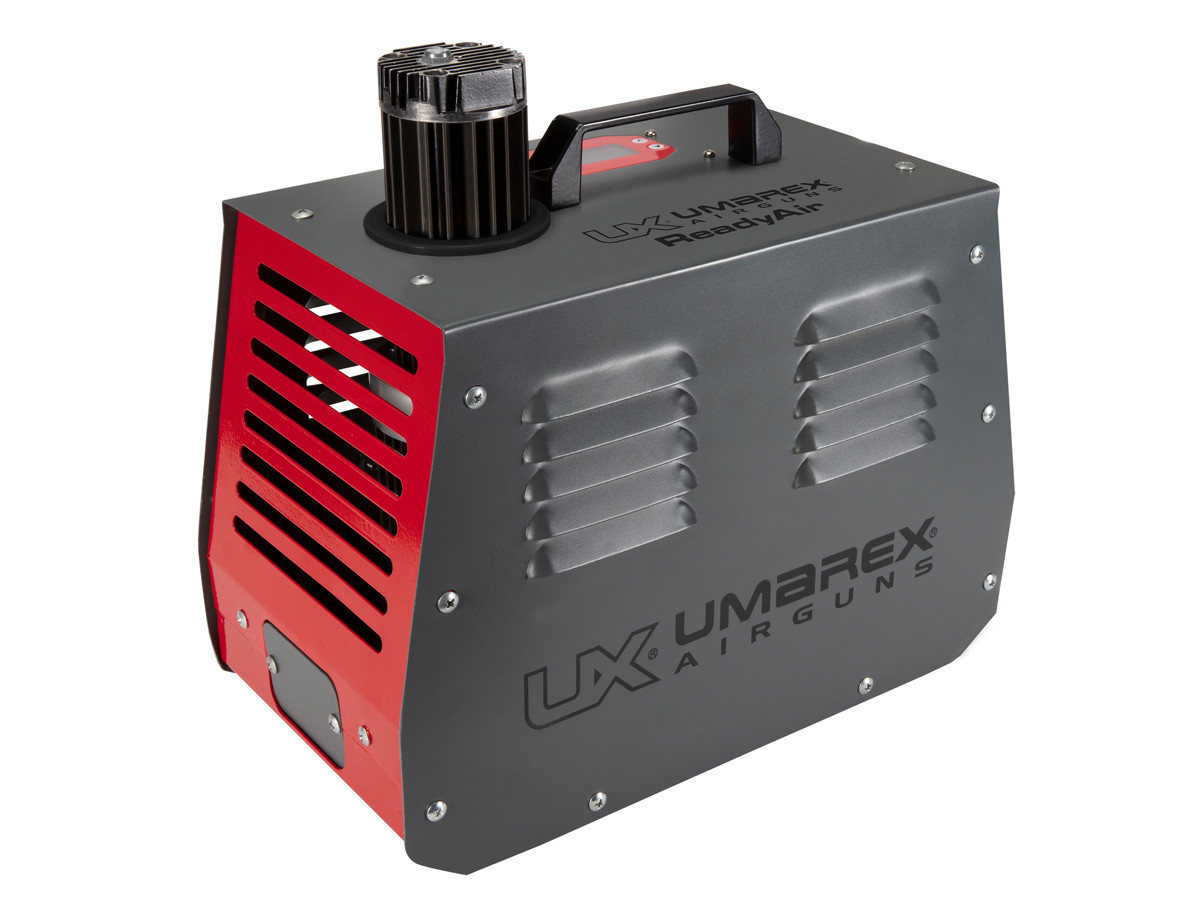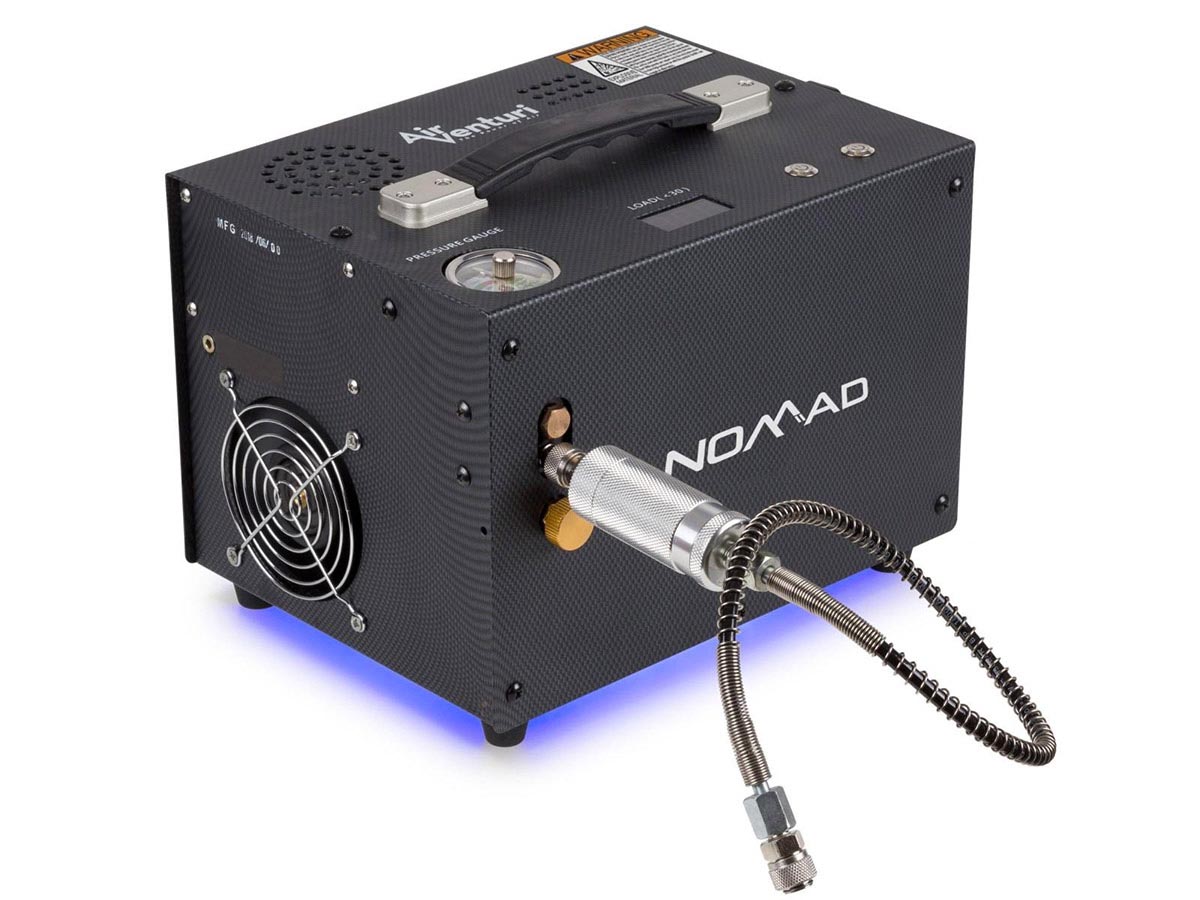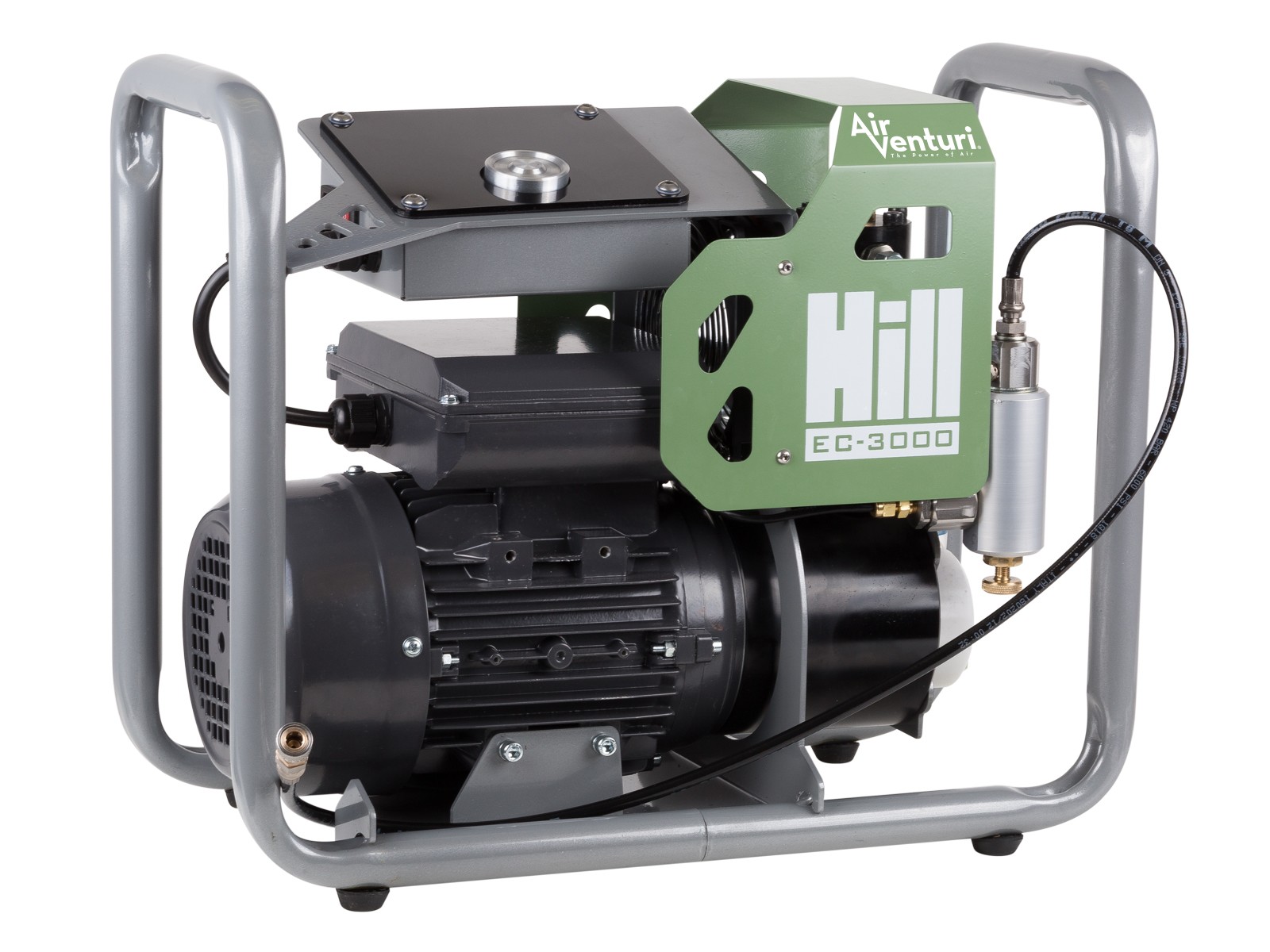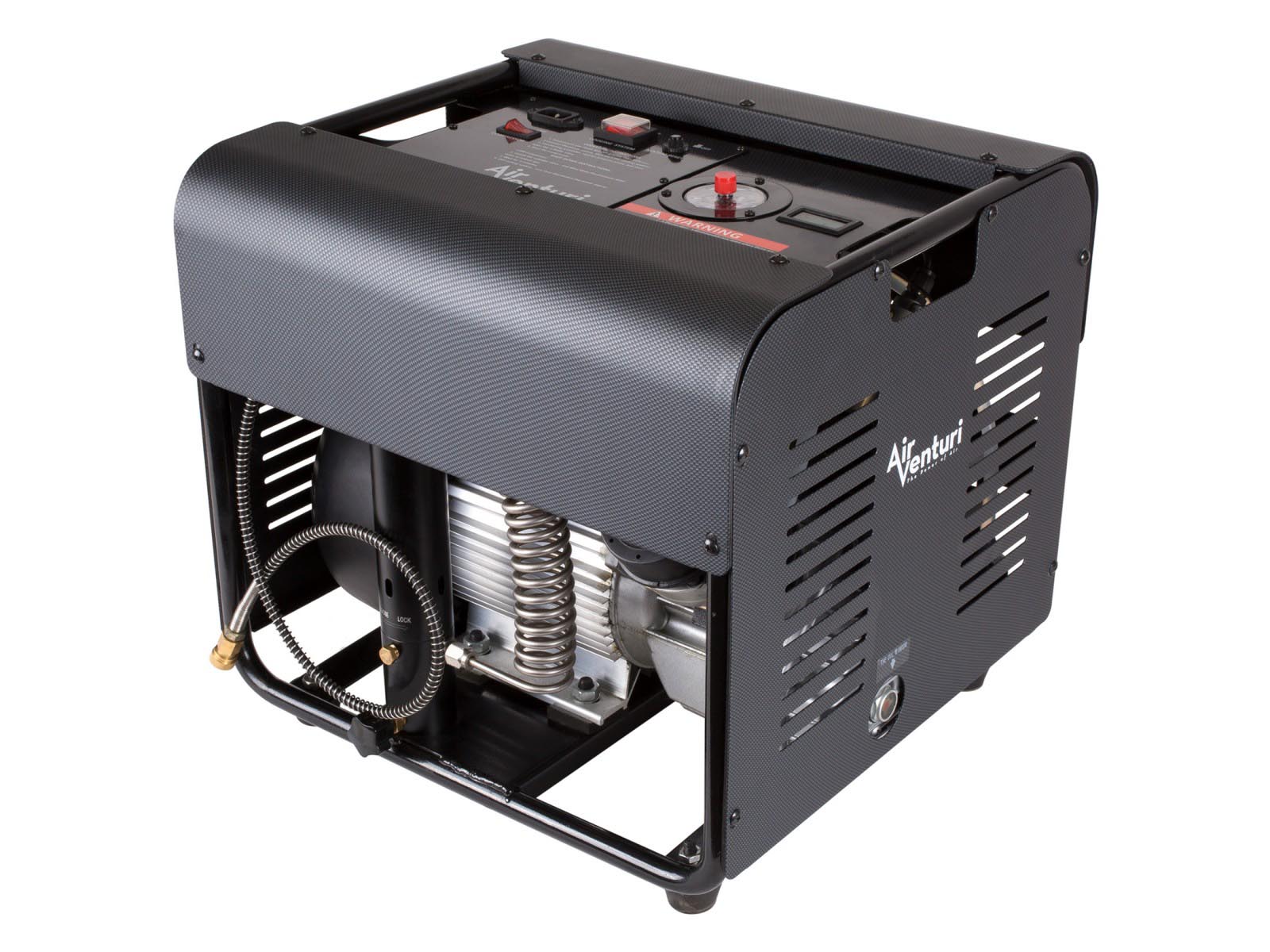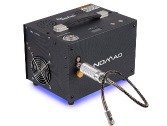With so many personal compressors on the market, it’s important to know what can and can’t get things done for you. Unfortunately, much of what we see with “bad” compressors has more to do with improper use than actual product issues. Hopefully, we’ll be able to help you avoid such issues and learn what you need to fill your High-Pressure Air (HPA) needs, whether it’s filling airguns or filling tanks.
What Are You Going to Fill?
This is the biggest question we need to address. Are you going to be filling airguns, or will you also want to fill bottles? If you are going to fill your airguns, then it’s really simple, but if you want to fill a bottle, that’s when things get tricky.
Any of the personal compressors we sell on our site can fill airguns. Like the Ready Air and Air Venturi Nomad II, some can run on both 110v and 12v, while others like the Hill EC-3000 only work on 110v. Read the manual and only use their recommended lubrication.
If you are going to fill bottles, then the starting point will be the Air Venturi 4500 dual cylinder compressor. It requires proper oil, water, and regular maintenance if you want it to last. Let’s start with some basic principles and then drill down to some more model-specific things to consider.
General HPA Compressor Best Practices
We often hear, “I’m only topping off my bottle.” This may be true but look at it from the compressor’s perspective. It has to work the hardest right at the end of the fill. That’s the 3000 psi to 4500 psi range. When you are “only topping off,” you are starting the job right at the max use case of your compressor and then asking it to push to the top of its capacity each time you fill a bottle. What would that do to the engine if you only ever run your car at 9000 RPM? Saying “I only use it to check the mail” really wouldn’t matter because you are always running at the top end of what it can do. Unless you take meticulous care of your engine, you’re not going to have it for long. Same with your PCP compressor.
Nearly all airgunners are in this use case as we never run our bottles or our airguns to zero. There are “continuous duty” compressors that can just run, but they are thousands of dollars and really out of most airgunners’ budgets. Most of us are using personal compressors, under $2000. The best way to help prevent a breakdown is to make sure that you only run the correct lubricant(s) and keep your run times reasonable. Prolonged filling sessions generate a lot of heat, which is your biggest enemy. Even if you don’t see the temps climb that high, charge your bottles in segments of 15 to 20 minutes or so, making sure to bleed off the compressor’s pressure lines before you start the next segment. Don’t ever start the compressor under load. The exception to this is the Hill EC-3000 which is designed to automatically pause, cool down, and restart as needed when filling airguns. Pretty cool, pun intended.
HPA Compressors for Filling Guns
We’ve mentioned the Umarex Air Ready, Air Venturi Nomad II, and Hill EC-3000. These are compressors designed only to fill guns. They will work well and last a long time provided you use them properly. Let’s look at each in order.
The Umarex Ready Air is a computer-controlled personal compressor that operates at 12v and 110v. It doesn’t need oil, water, or grease. And, it’s completely user-serviceable by design. Rebuild kits are readily available, and it’s a great little portable compressor. It has an auto-shutdown circuit that prevents overheating. It’s not like the Hill that will restart and continue the fill, but it does at least monitor internal temps and shut down when it gets too hot. If you are constantly filling larger airgun tanks to 4500, you will need to rebuild it more often than the manual stipulates. On the other hand, if you are filling smaller bottles to 3000 PSI or 3300 PSI, you’ll get a lot more life out of each rebuild.
The Nomad II is also a 12v and 110v self-contained personal compressor. It uses pure silicone oil as a lubricant and is not user-serviceable. It has a manual dial for setting the auto-shutoff pressure and does not have an overheat protection circuit. As a result, you will need to monitor heat and run time, or you could easily overwork the unit and cause it to fail. Nevertheless, it’s a great little compressor, provided you monitor your fill times and keep it properly lubricated.
The Hill EC-3000 only runs on 110v. It’s the most advanced and expensive of our personal “airgun” compressors. It fills to 300 bar (+4350psi) and not only has a heat protection circuit but will auto-start once a safe temperature is reached. It will continue to cycle until the desired pressure is reached. It uses two types of oil for lubrication. The oil is proprietary. Substituting oil may void your warranty. It fills more quickly than the other two options and is great for a simple bench compressor for more high-volume shooters.
HPA Compressors for Filling Bottles
Many bottle-filling compressors are based on the same design, so the principles we share here will apply to any similar units. The Air Venturi 4500 is our personal favorite and runs about $1600. It uses special ISO 100 class synthetic oil available on our site. It has a moisture tower with a replaceable filter, and it’s water-cooled via a radiator and water reservoir. The fill rate is about 1CFM, so a large 90CFM bottle will fill from empty to 4500 PSI in about 90 minutes, give or take. While you can certainly just let it run, you will be running the unit at its max operation range for an extended period of time. It’s here where filling in sessions may extend the life of your compressor. Also, you need to manually purge the condensing tower every 15 to 20 minutes, depending on your environment, to prevent moisture from backing up into the system, which would cause a catastrophic failure.
The AV 4500 Compressor is a serious piece of equipment that will require attention and regular service. Complete rebuild kits and user-serviceable parts are available on our website. To keep track of runtime, we recommend picking up a simple vibration hour meter and logging your usage and fill times. If you see your fill times increasing, you may need to plan a service for the internal parts.
Any more questions?
We know that’s a lot of information to digest, and we hope that it’s helpful. If you have more questions, please reach out and we’ll be pleased to help.
